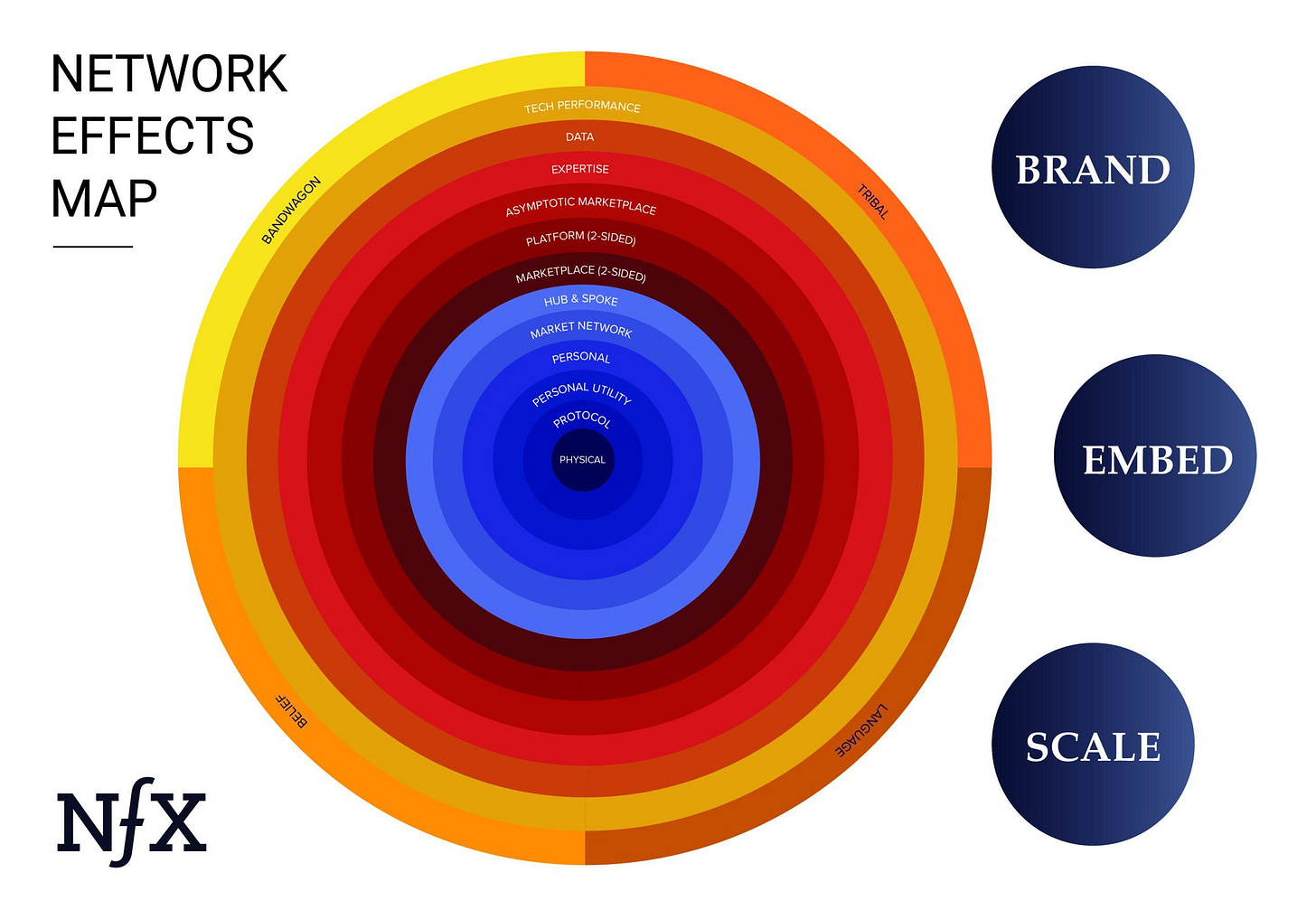Wednesday W.O.W - Network Effects 👩🏻🤝👨🏽🌐💪🏻
[5 min read] Your mid-week bite sized treat on emerging tech on our journey to the Metaverse. Learn why network effects continue to redefine industries and shape the global economy.
A nibble of knowledge in your inbox every Wednesday with a simple format:
🇼 What the technology is.
🇴 Objective(s) - what is it trying to achieve, with some examples
🇼 Why it is important.
This is week 49 of the 520 weeks of writing I have committed to, a decade of documenting our physical and digital lives converge.
🇼 What are network effects?
Some of the world's most influential companies like Twitter, Amazon, Apple, Meta, Uber, Salesforce, and Tesla owe their success to a common trait: network effects. These effects, responsible for 70% of the value generated by tech companies since the Internet era began in 1994, offer significant defensibility in the digital realm.
Network effects, as defined in the book "Platform Revolution" authored by Geoffrey Parker and Sangeet Paul Choudhary, are the fundamental drivers of value creation and competitive advantage for platform-based businesses. Unlike the industrial era, which relied on supply economies of scale to generate monopolies, the digital age thrives on economies of scale. These contemporary monopolies leverage technological advancements, such as social networks, app development, and other phenomena, to amplify the value of larger networks for their users.
The heart of network effects lies in their ability to create a positive feedback loop, where the value of a network grows exponentially with the increase in its users. A prime example is Metcalfe’s Law, illustrated through companies like Microsoft, Apple, Facebook, and Uber. This exponential growth pattern significantly impacts market expansion, attracting new entrants enticed by the burgeoning network and often accompanied by competitive pricing strategies that fuel widespread adoption.
Metcalfe's law states that the financial value or influence of a telecommunications network is proportional to the square of the number of connected users of the system.
Two-sided network effects, like those seen in Uber, highlight the interplay between two market facets—wherein riders attract drivers and vice versa. The duality of these effects is further exemplified across various platform businesses such as Google’s Android, Upwork, PayPal, and Airbnb.
🇴 What are the Objectives?
Network effects have specific objectives and aims. These effects play a vital role in stimulating the growth of a network, often leading platform businesses to invest in attracting participants to one side of the market, knowing that the other side will naturally follow suit. For instance, Uber's strategic use of coupons to lure both drivers and riders exemplifies this cycle, driving a virtuous cycle within their network.
However, network effects are distinct from other growth-building tools, such as price effects and brand effects. While price effects, including discounts and free offers, might transiently attract customers, they lack the sustainability offered by network effects. Similarly, brand effects, tied to quality association, may not sustainably retain users within a network.
The example of network effects in the first landline phones, as highlighted by Robert Metcalfe's observations and Metcalfe’s Law, demonstrates that the value of a telephone network increases nonlinearly as the number of users or subscribers grows. In simple terms, as more people join the network, the value of the network to each user increases significantly. This exponential growth in value is due to the increased number of connections and communication possibilities available as the network expands. In essence, the more individuals that are part of the telephone network, the more valuable and useful the network becomes to each participant, thereby emphasising the fundamental principle of network effects.
🇼 Why do network effects play a major role in the adoption of emerging technology and therefore the future of society?
The significance of network effects extends far beyond business strategies, profoundly influencing the trajectory of society's future. These effects wield substantial power in driving the adoption of emerging technologies, shaping not just the business landscape, but the societal structure itself. As the adoption of these effects continues, their role in restructuring industries becomes increasingly apparent, heralding a fundamental shift in traditional models.
Web3, the decentralised internet, amplifies Network Effects' impact on societal evolution. By decentralising data, control, and fostering user ownership, Web3 engenders a more democratised digital ecosystem. Network Effects within Web3 incentivise collaborative participation, enhancing community-driven value creation. This decentralised model reshapes power dynamics, as users, rather than centralised entities, drive innovation and network growth. Through blockchain and decentralised applications (dApps), Web3 cultivates interconnected, resilient networks, altering traditional business paradigms. Web3's reliance on user interaction and shared participation not only fortifies Network Effects but also propels societal evolution towards decentralised, transparent, and participatory digital landscapes.
Bonus:
If this tickles your fancy and you want to dive deeper, you will love "The Network Effects Manual: 16 Network Effects." The authors claim that network effects are one of the four remaining defensibilities in the digital age (alongside brand, embedding, and scale) and of the four, network effects are by far the strongest. To date, they’ve identified 16 distinct types of network effects that fall under five broader categories. Enjoy!
That’s all for this week! If you have any organisations in mind that could benefit from learning about emerging technology, be sure to reach out. Educational workshops are one of many consulting services I offer.



